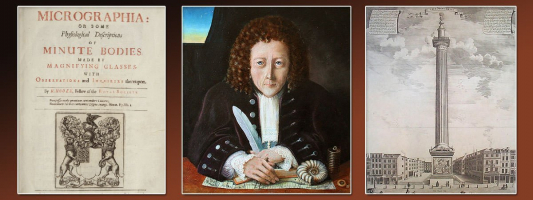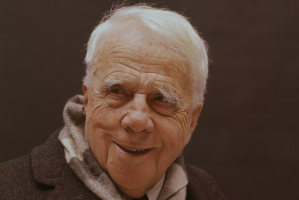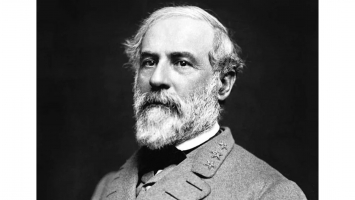Top 8 Interesting Facts about Robert Koch
German microbiologist Koch also practiced medicine. He lived a life devoted to medicine and was a pioneer in the field of bacteriology. He was a voracious ... read more...reader and researcher, which inspired him to create important advancements in the lab equipment he was utilizing. Discover all these interesting facts about Robert Koch by reading this article.
-
Koch was born on December 11, 1843, by Hermann Koch (1814–77) and Mathilde Julie Henriette (née Biewend, 1818–1871), in Clausthal, Germany. His mother was constantly working to make ends meet while his father worked as a mining engineer. The third of thirteen siblings, he was born. He was intellectually gifted from a young age. Robert Koch's intelligence allowed him to teach himself to read when he was only five years old, which is one of the interesting facts about Robert Koch. His ability to do so amazed every member of his family, especially considering that he utilized outdated newspapers to aid in his educational pursuits. He attended his local Gymnasium known as a high school in Germany, where he developed a strong interest in biology and chemistry.
In 1862, Koch enrolled in the University of Göttingen to study natural science at the age of 19. He started studying botany, physics, and math. He was given an assistant position at the pathological museum of the university. He changed his topic of study to medicine after three semesters since he wanted to become a doctor. Jacob Henle, an anatomist who developed a theory of contagion in 1840, encouraged him to take part in his research study on uterine nerve anatomy during his fifth semester of medical school. He received a research award from the university as a result of his work, which also allowed him to spend some time studying under Rudolf Virchow, who was at the time regarded as "Germany's most known physician." In his sixth semester, Koch started working as a research assistant at the Physiological Institute. He focused on the production of succinic acid, a signaling chemical that is also crucial for the mitochondria's metabolism. This would ultimately serve as the dissertation's foundation. He graduated from medical school in January 1866 with the highest honors, maxima cum laude.
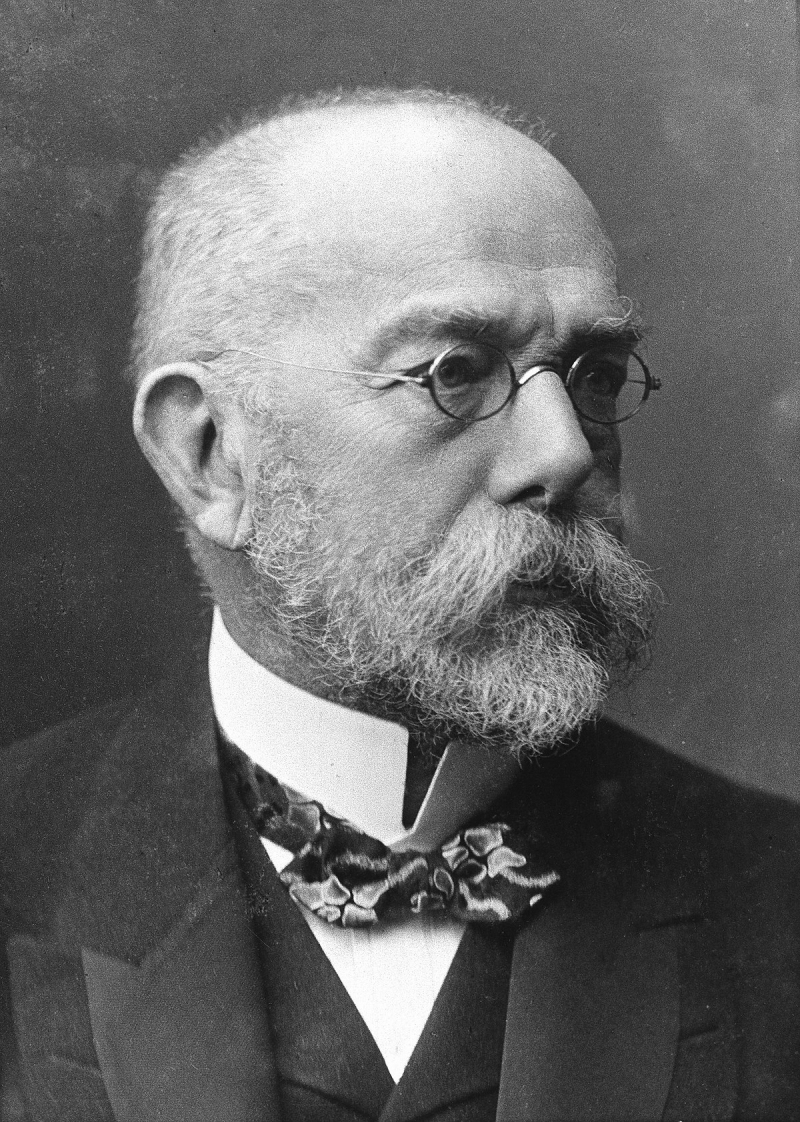
www.biography.com 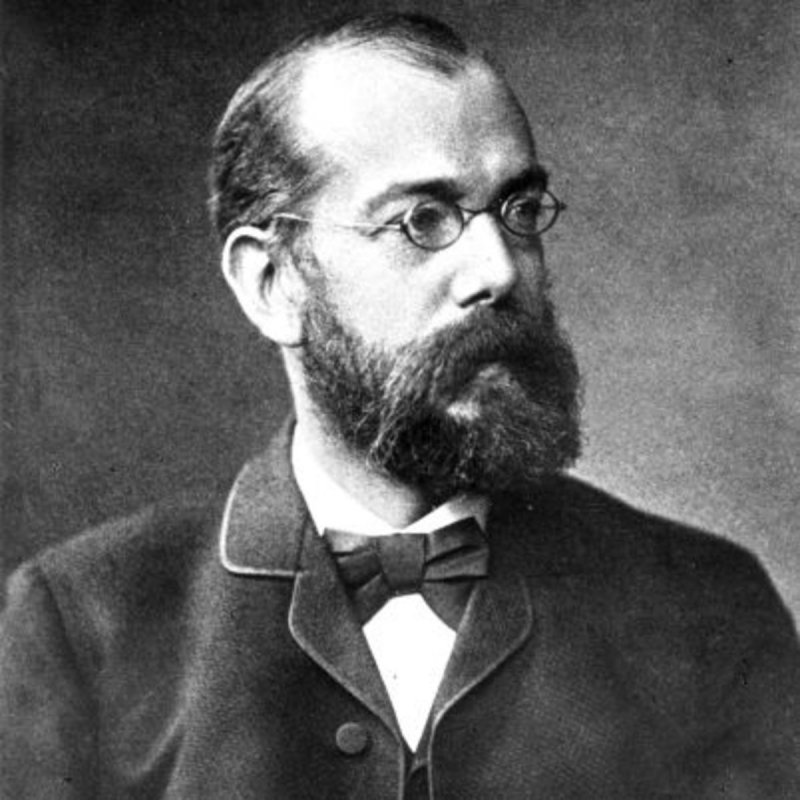
www.biography.com -
Koch temporarily served as an assistant in the General Hospital of Hamburg after graduating in 1866. He relocated to Idiot's Hospital of Langenhagen, close to Hanover, in October of that year to work as a general practitioner. He relocated to Neimegk in 1868 before going to Rakwitz in 1869. He volunteered in the German army as a volunteer medic in 1871 to aid in the war effort after the Franco-Prussian War broke out. A year after his release, he was hired as a district doctor at Wollstein, Prussian Posen (now Wolsztyn, Poland). His wife got him a microscope for his birthday after his family moved in. He established a private laboratory and began his profession in microbiology using the microscope.
In a lab attached to his patient examination room, Koch started his study of microbes. One of his greatest contributions to the discipline of microbiology came from his early work in this lab when he invented the method for culturing bacteria. He also succeeded in isolating and cultivating a few diseases in a pure lab culture. Koch made the case in his first work, which was published in 1870, that parasitic organisms were to blame for infectious illnesses' occurrence and spread. Ferdinand Julius Cohn, a professor at the University of Breslau, was much impressed by his discovery of the anthrax bacillus and helped him publish the finding in 1876. Koch was asked to demonstrate his new bacteria there in 1877 by Cohn, who had founded the Institute of Plant Physiology.
In 1879, Koch was appointed district physician in Breslau. When he was appointed a government advisor at the Imperial Health Office a year later, where he served from 1880 to 1885, he went to Berlin. He was elevated to the high executive post of Geheimer Regierungsrat in June 1882 as a result of his identification of the TB bacteria. Koch was given two jobs at Berlin University in 1885, one as a professor and the other as an administrator. After, he was appointed Chair (Professor of Hygiene) of the Faculty of Medicine as well as Director of the Hygienic Institute. He was made a Freeman of the City of Berlin and Surgeon General (Generalarzt) Class I in 1890. He was fortunate to friend scientists like Ehrlich, von Behring, and Kitasato among his colleagues at the new Institute for Infectious Diseases, where they produced significant discoveries.
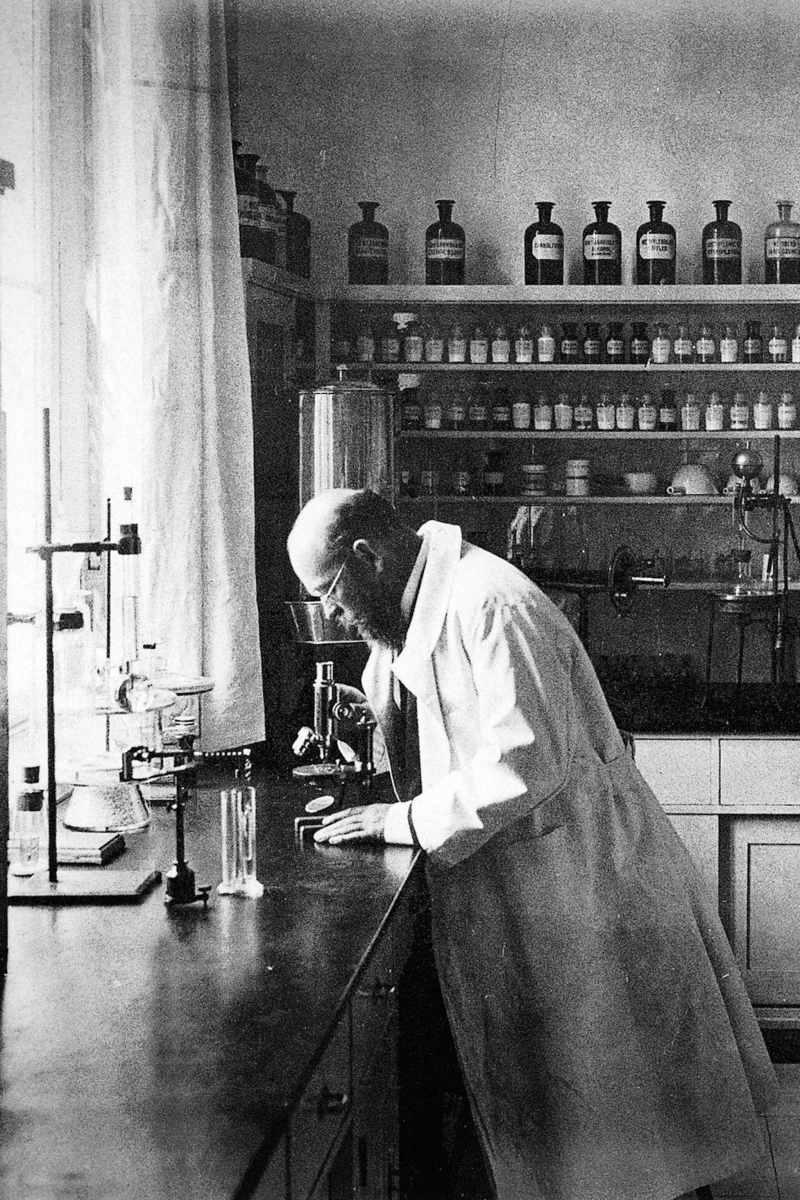
www.hartmann.info 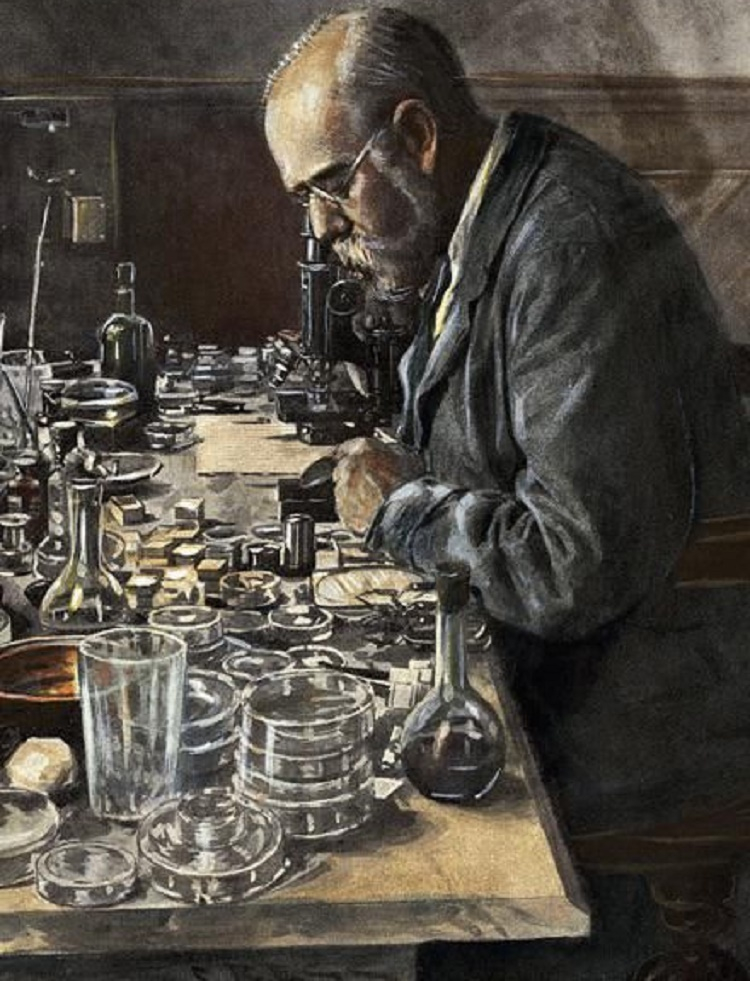
www.hartmann.info -
The majority of Koch's instructors were eminent scientists who had written and published several books and scholarly publications. Casimir Joseph Davaine, a French parasitologist, made the first observations of various organisms in the blood of sick animals in 1850. Even though Davaine made enormous strides, the tale of this disease remained far from being fully understood more than ten years later, in 1863, when he was talking about how anthrax is communicated. Following his studies on anthrax, Koch chose to use all of this information.
Robert Koch's ability to prove how and in what shape anthrax organisms develop in his laboratory is a noteworthy fact. As a scientist, he was determined to understand how anthrax spreads. These creatures grow into large filaments and include some dried spores as well. He dry-fixed bacterial cultures onto glass slides, stained the cultures with dyes, and then looked at them under a microscope to identify this causal agent. According to his findings, these dried spores may still serve as a breeding ground for bacteria if exposed to specific environmental factors. Anthrax will eventually result from these microorganisms. Since anthrax was a problem with farm animals at the time, all of this material was published and appreciated by scientists and non-scientists alike.
Koch wished to be well informed on anthrax. The relationship between animals and the bacterium known as the "anthrax bacilli" was one of the first topics he looked at. More particular, the researcher was interested in whether an animal could still transmit sickness even if it had not come into touch with the bacterium. His findings showed that the bacilli could still produce anthrax even in the absence of interaction with an animal. Koch also rose to fame once the findings were made public in 1876. He continued to collaborate with his editor at the time because he could learn from him how to take better pictures of the bacteria they were found.
In 1876, while working in Wöllstein, he published his discoveries in a pamphlet titled "Die tiologie der Milzbrand-Krankheit, Begründet auf die Entwicklungsgeschichte eines Bacillus Anthracis" (The Etiology of Anthrax Disease, Based on the Developmental History of Bacillus Anthracis). The first image of a bacteria was taken as a result of his publication on the anatomy of the anthrax bacterium in 1877. Because he was the first to associate a particular microbe with anthrax, his work with the disease is important, which is one of the interesting facts about Robert Koch. His study on anthrax is noteworthy since he was the first to reject the notion of spontaneous genesis and support the germ theory of illness by connecting a specific microbe with a particular disease.
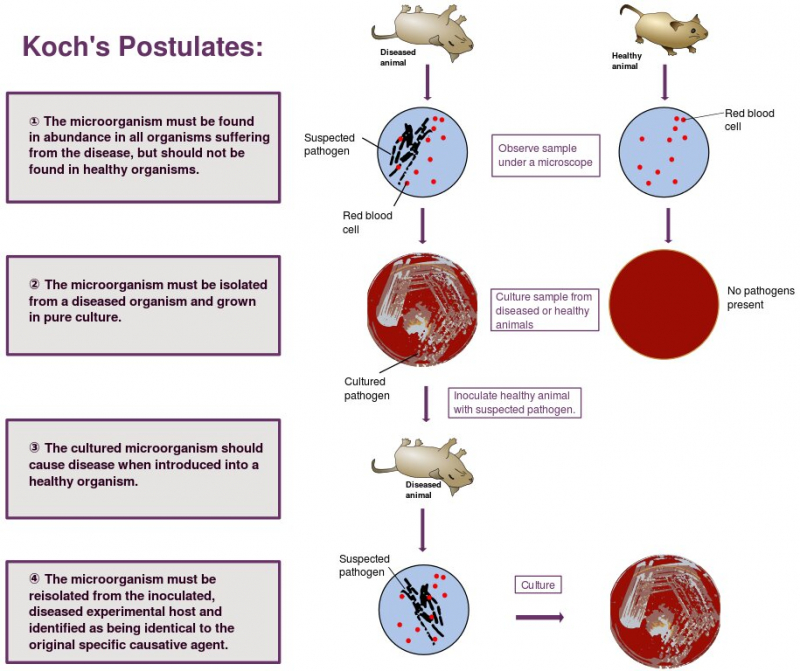
Koch’s Postulates about Anthrax - pediaa.com 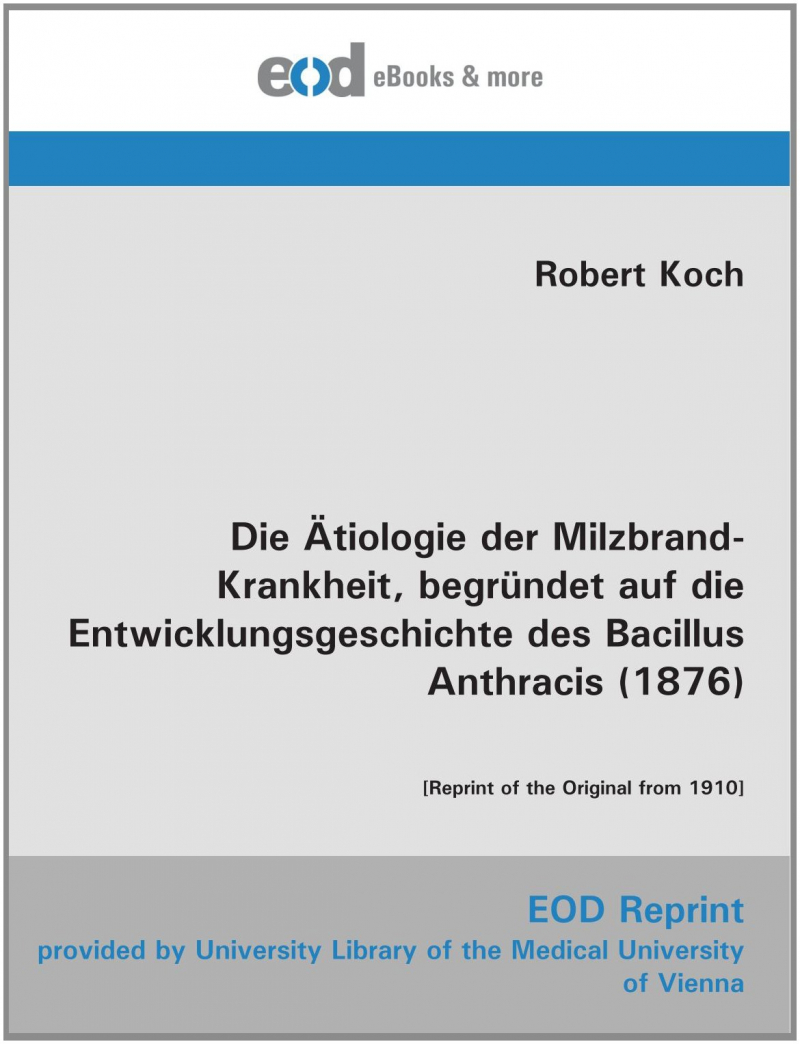
Die tiologie der Milzbrand-Krankheit, Begründet auf die Entwicklungsgeschichte eines Bacillus Anthracis - amazon.com -
Koch and Pasteur were cordial when they first met at the Seventh International Medical Congress in London in August 1881. But disagreements over science dominated the remainder of their professional lives. Koch's interpretation of the anthrax bacillus he discovered in 1876 as causality that is, the germ that caused the anthrax infections set off the controversy. Although he had not yet developed his postulates, he did not prove that the bacteria was to blame for the illness; rather, he made an inference to that effect. Therefore, Pasteur contended that while Koch's finding did not provide complete proof of causality, his anthrax vaccine created in 1881 did. A remark accompanying Koch's finding that "anthrax never arises without living anthrax bacilli or spores" was published in 1881.
There is in Pasteur's judgment, no more concrete evidence that anthrax bacilli are the actual and exclusive cause of anthrax and that vaccination as Pasteur said is not impossible. Pasteur sent his aide Louis Thuillier to Germany to demonstrate his vaccination and refute Koch's theory. At the International Congress for Hygiene in Geneva in 1882, they engaged in a contentious public dispute during which Koch criticized Pasteur's techniques as "unreliable" and asserted they "are incorrect and they always lead to wrong conclusions." Further criticizing Pasteur, Koch subsequently asserted that "Pasteur is not a physician, and one cannot expect him to make competent judgments regarding pathological processes and the signs of disease."
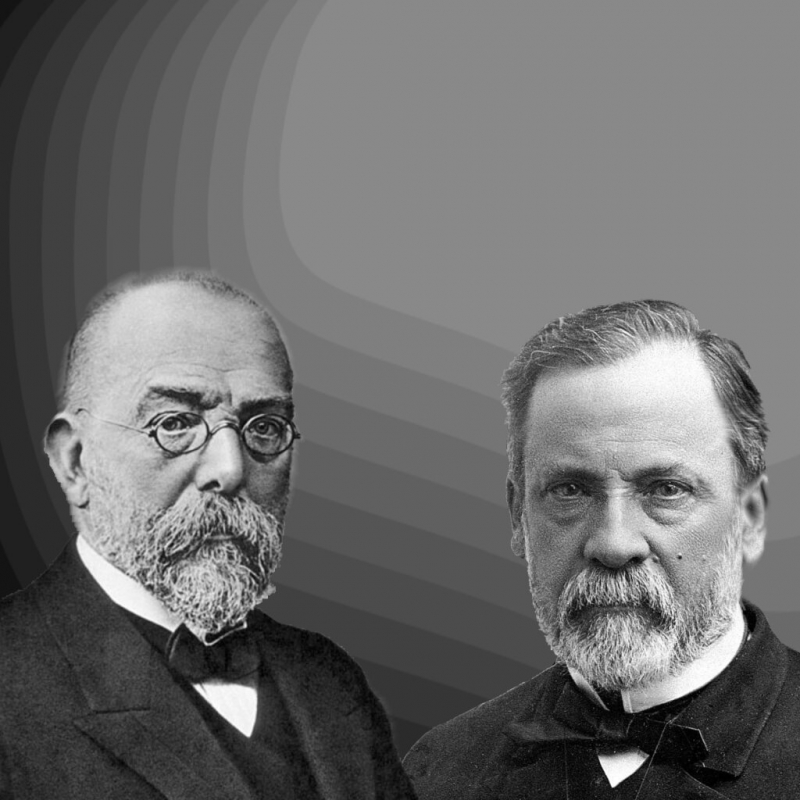
Robert Koch and Louis Pasteur - kistodaynews.com GrowGrayMatter Dr. Frank O'Neill - youtube.com -
While working as a lecturer at the University of Berlin many of Robert Koch's pupils were taken aback when they left their first lesson with the professor, which is another interesting fact about him. He wasn't a good public speaker. However, due to his demonstrations, examples, and ability to clearly explain complex concepts, Robert Koch became one of the most well-known speakers of his time. Koch has a large number of international students.
Robert Koch continued to create bacteriology, a brand-new branch of science, here. The Hygiene Institute became the focal point for medical professionals interested in bacteriology from all over the world as Koch's personnel and student numbers increased. People would travel wherever he was to learn from one of the new bacteriologists. However, he gave up his teaching in 1891 to take over as head of the Royal Prussian Institute for Infectious Diseases, which included a clinical division and beds for the clinical research section. He agreed to onerous terms in exchange for this.
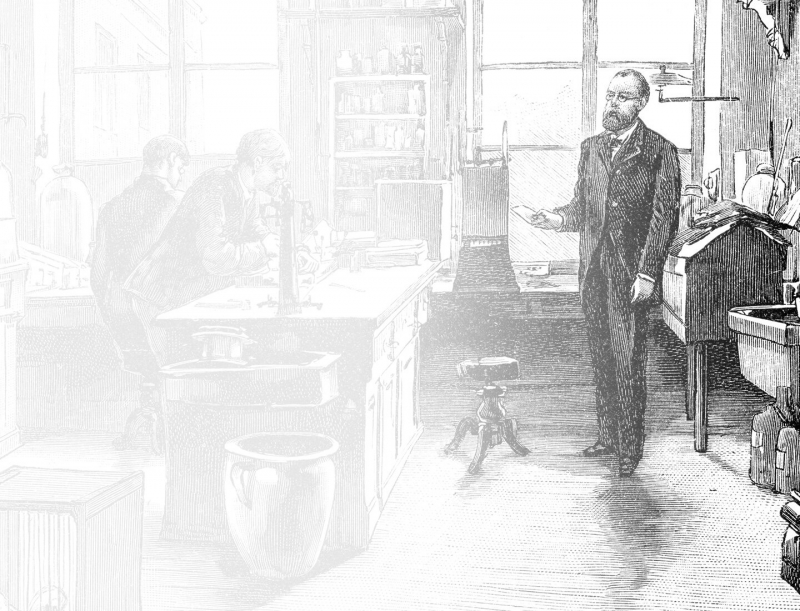
www.hartmann.info 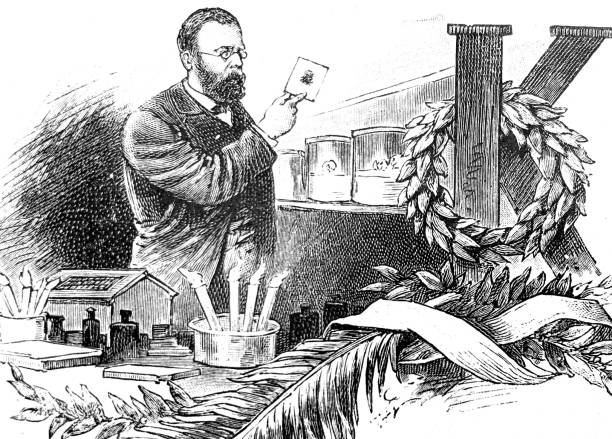
www.hartmann.info -
The Physiological Society of Berlin was the venue where Koch presented his results on March 24, 1882, and while being far from a persuasive presenter, he had his listeners transfixed. They were astounded by the beauty and simplicity of it all, and it was clear to them that they had seen scientific history. Paul Ehrlich, a German medical researcher who subsequently won the Nobel Prize for Physiology or Medicine in 1908, was present and afterward referred to it as "the most compelling event" of his professional career.
On April 10, 1882, Koch published his lecture titled "The Etiology, or Cause, of Tuberculosis" in The Berlin Clinical Weekly. Due to the fatal nature of TB, the finding was not only published in prestigious medical publications but also made it to the front pages of newspapers all around the world, making Koch an instant sensation.
Koch also discovered the cholera cause, although not being aware that it had already been accomplished decades previously. When he discovered tuberculin, he also thought he had a TB cure. Despite not being a medicinal agent, tuberculin did develop as a diagnostic tool. Koch received the 1905 Nobel Prize in Physiology or Medicine "for his research and discoveries in connection to TB" as a result of his diligent work on the subject. A significant step toward making TB both preventative and treatable was taken by Koch's discovery.
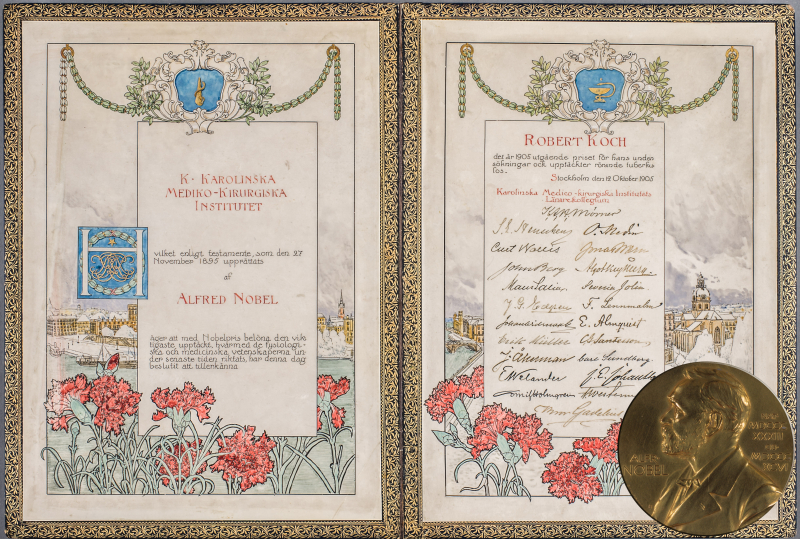
www.rki.de 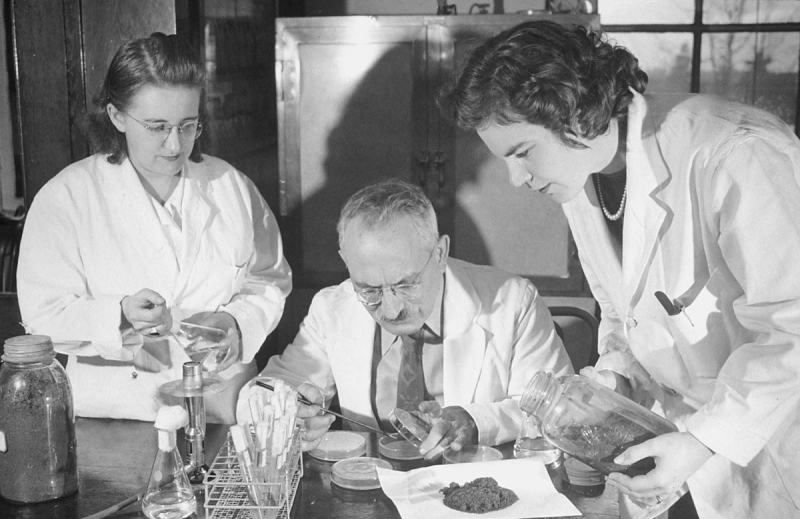
www.biography.com -
Koch was an avid traveler, so it was only a matter of time until he combined all of his interests. He was able to develop new techniques in Berlin, including one he dubbed Reinkulturen, which included cultivating pure bacterial cultures in various environments, like a potato. Following that, he spent a lot of time traveling abroad. He investigated malaria in Italy, Indonesia, and New Guinea and developed recommendations for its avoidance. He investigated typhoid illness in Trier and clarified the "carrier state." He was dispatched to Egypt to look into an epidemic that had happened at the time while researching TB. Cholera was once more spreading quickly. After that, he traveled to India to pursue his research on the issue.
Robert Koch traveled to Rhodesia (now South Africa) at the British government's request to research rinderpest. He also researched relapsing fever, sleeping sickness, malaria, and horse sickness there. He spent a good deal of time traveling around Africa before deciding to go back to Germany. After receiving the Nobel Peace Prize in 1905, Robert Koch traveled back to Central Africa to do more studies on several ailments, including malaria. He visited family in the United States in 1908 and raised funds for the investigation of TB while he was there. At the Waldorf Astoria in New York, a feast was hosted in his honor. Andrew Carnegie, who had contributed to the Robert Koch Foundation for the Conquest of Tuberculosis 500 000 marks, was present. Koch visited two of his brothers in the Midwest after leaving New York. (One resided in St. Louis, the other in the Iowa town of Keystone). He then took a trip to Japan, but he had to finish it early since he had accepted an invitation to the International Tuberculosis Congress in Washington.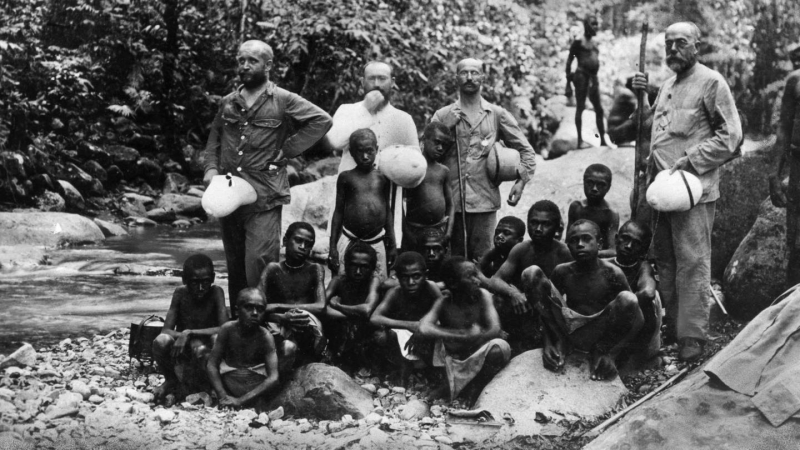
Robert Koch in South Africa (standing right) - www.swr.de 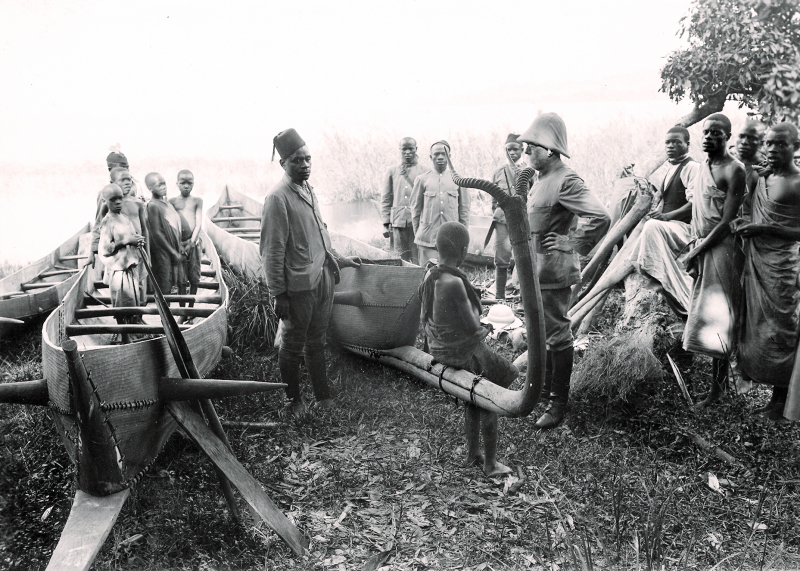
Robert Koch (with pith helmet) in East Africa - www.swr.de -
During his years of dedication to his work and the medical industry in general, he has achieved great achievements and awards, that is one of the interesting facts about Robert Koch. On November 19, 1890, Koch was appointed a Knight Grand Cross of the Prussian Order of the Red Eagle. In 1897, he was chosen as a Foreign Member of the Royal Society (ForMemRS). For his studies and discoveries related to TB, he received the Nobel Prize in Physiology and Medicine in 1905. His work on tropical and TB illnesses earned him the Order Pour le Merite in 1906, as well as the Robert Koch Medal, which was created to honor the finest living physicians, in 1908. He received the Order of the Crown, 100,000 marks, and appointment as a Privy Imperial Councillor from Emperor Wilhelm I. Fellow of the Science Senate of the Kaiser Wilhelm Society and Surgeon-General of the Health Service.
Koch had a heart attack on April 9 of 1910 and never fully recovered. Koch passed away in Baden-Baden on May 27, three days after delivering a speech on his study on TB at the Prussian Academy of Sciences. He was 66 years old. On December 4th, 1910, his urn containing ashes was interred in a tomb that had been built especially for him at his institute. The Robert Koch Institute holds 1,500 letters, awards, papers, lecture texts, prepared microscope slides, pictures, and other pieces of Robert Koch's scientific legacy. In Berlin in 1891, Koch founded the Royal Prussian Institute for Infectious Diseases. After his passing, it was renamed Robert Koch Institute in his honor. Besides, since 1982 the World Health Organization has observed "World Tuberculosis Day" on March 24 to honor Koch's discovery of the tuberculosis bacterium. On the frieze of the London School of Hygiene & Tropical Medicine building on Keppel Street, Bloomsbury, Koch is one of 23 names from the domains of hygiene and tropical medicine.
Additionally, in the Mitte neighborhood of Berlin, a little park called Robert Koch Platz contains a large marble monument of Koch that is located immediately to the north of the Charity Hospital. A German-produced movie from 1939 with Oscar-winning actor Emil Jannings in the titular role was about his life. Google released a Doodle in honor of Koch's birthday on December 10, 2017. The initial medium he employed to separate pure bacterial cells to aid in his study is depicted in today's Google Doodle depicting potato slices. Google states that Koch experimented with potato slices up until his helper Julius Petri created the Petri dish, which is also seen in the Doodle and bears Koch's likeness.
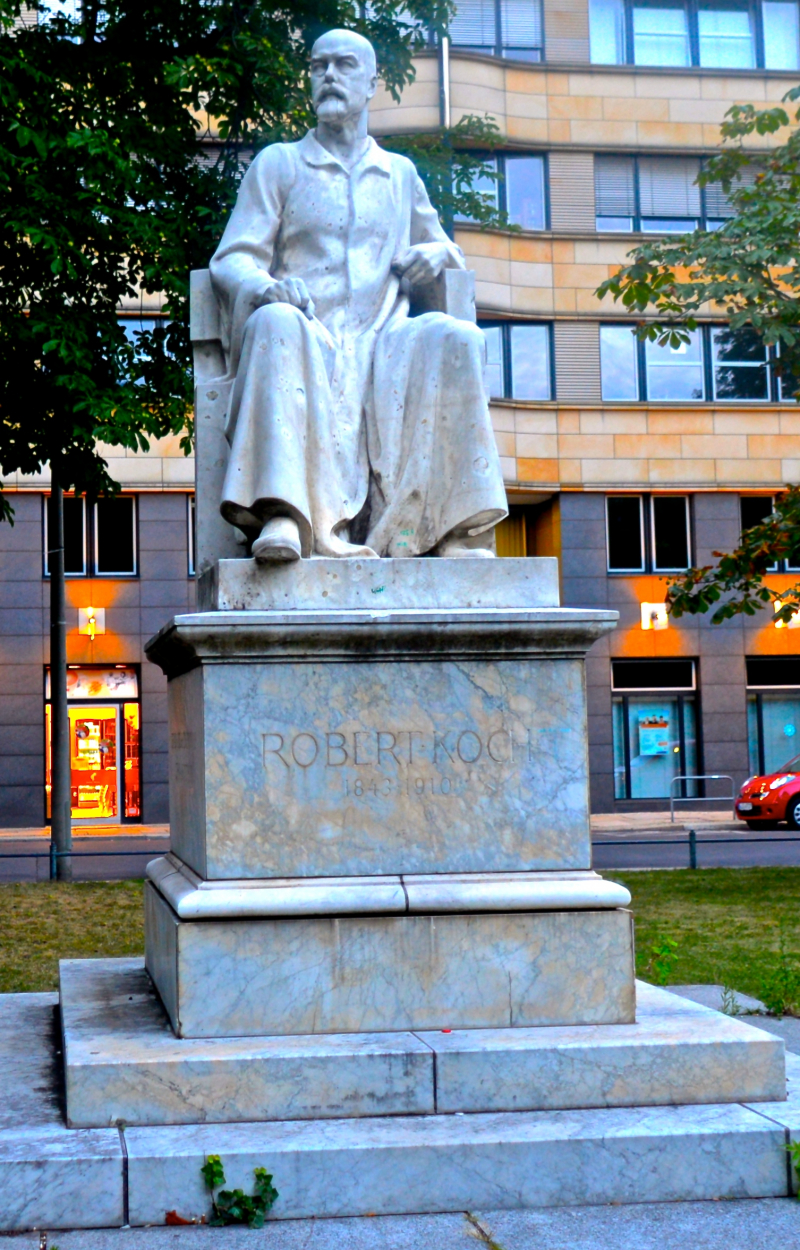
Statue of Robert Koch in Berlin -- commons.wikimedia.org Rajamanickam Antonimuthu -- youtube.com










